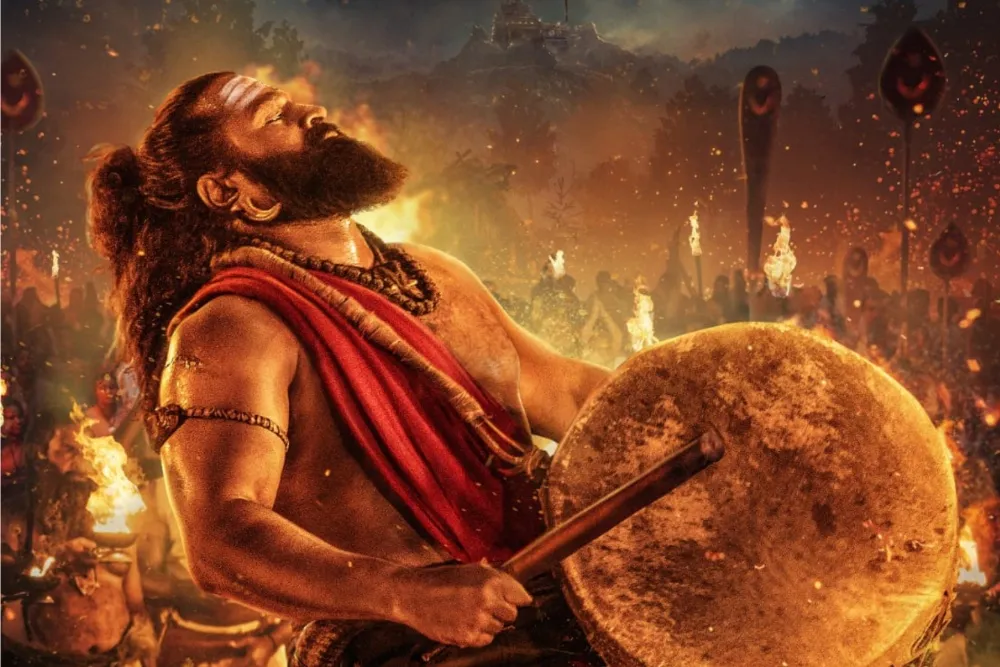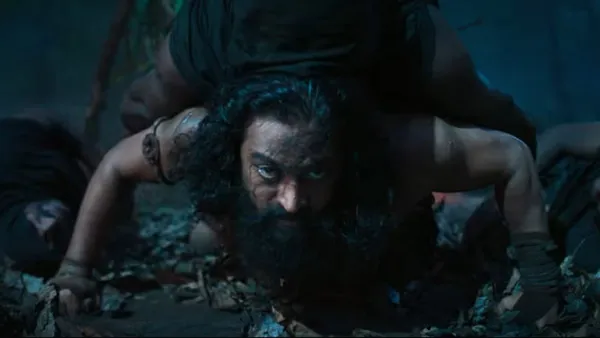Kantara: Chapter 1 is finally here! Bigger, bolder, and louder- but is it better? Here’s our honest take on Rishab Shetty’s ambitious prequel.
-Robin Bhuyan
Released on October 4, 2025, Kantara: Chapter 1 arrived with sky-high expectations. Directed, written, and headlined by Rishab Shetty, the film serves as a prequel to the 2022 blockbuster that is said to be one of the movies that redefined Kannada cinema’s cultural resonance. With Rukmini Vasanth, Gulshan Devaiah, and Jayaram in pivotal roles, this chapter promised to explore the divine origins of the Kantara universe, and fans couldn’t wait. The hype was massive, the visuals in trailers jaw-dropping, and many wondered: could Shetty strike gold twice? The answer is complicated because while the film is a feast for the eyes, it can also test your patience.
The Positives

Let’s get this out of the way, Kantara: Chapter 1 looks stunning. For a film made on a moderate budget of 125 crores INR, the visuals, world-building, and cinematography are spectacular. The dense forests, misty backdrops, and ritualistic sequences feel authentic and transportive. Critics were right: it’s visually richer and more ambitious than the first film. The VFX, especially in the climax, are top-tier by Indian standards and never feel fake or overdone.
Rishab Shetty absolutely owns his role. He delivers a commanding, grounded performance that captures both divine intensity and human emotion. Rukmini Vasanth also impresses; she’s a revelation here, balancing grace and grit in a story though these kind of narratives often sidelines its women. The music and background score by B. Ajaneesh Loknath amplify every scene, with tribal chants and percussive layers that send chills down your spine.
Even critics who were lukewarm about the pacing admit that the second half and climactic stretch are breathtaking. The final fifteen minutes, in particular, are pure magic, emotional, cinematic, and unforgettable.
The Negatives
Now, let us talk about where the movie disappoints us. The movie feels extremely and unnecessarily long, and the pacing often drags like a tired yaksha dance. It could have easily been trimmed by 40-50 minutes. What starts off mysterious soon turns boring and needlessly loud. Scenes stretch far beyond what’s necessary, with unnecessary comedy and the energy dips every time the narrative tries to be philosophical but ends up being plain confusing.
The plot is simplistic, yet somehow at times the characters and their actions manage to confuse the audience. You might find yourself thinking, “What the hell are these characters even doing?” You don’t relate or connect with any of the characters either. The writing fumbles between mysticism and melodrama, and the result is a tonally uneven film. It wants to be spiritual, historical, and massy all at once, and that’s where it loses focus.
Compared to the raw emotional depth of the first Kantara, this one feels too indulgent. The charm of the earthy folklore is replaced by a more self-serious, almost pretentious tone. Some dialogues feel forced, and the sound design, while grand, can sometimes be overbearing to the point of fatigue.

To Sum It Up
Kantara: Chapter 1 is a film that demands patience. It’s visually dazzling, powerfully acted, and ambitious in scope, but also bloated and exhausting at times. Rishab Shetty’s passion is undeniable, and his performance alone makes it worth a watch, but the storytelling doesn’t always match his intensity.
If you loved the first Kantara for its mystical realism and emotional simplicity, this prequel might feel overwhelming. Still, it’s a film you can’t dismiss; flawed yes, but bold in its attempt to expand a universe unlike any other in Indian cinema.
Rating: 4/10 : A divine spectacle trapped inside a mortal screenplay.
PS: This review reflects Enigmatic Horizon’s thoughts and experience of Kantara: Chapter 1. You might feel differently, and that’s completely valid. If the film resonated with you, we’re genuinely glad it did.